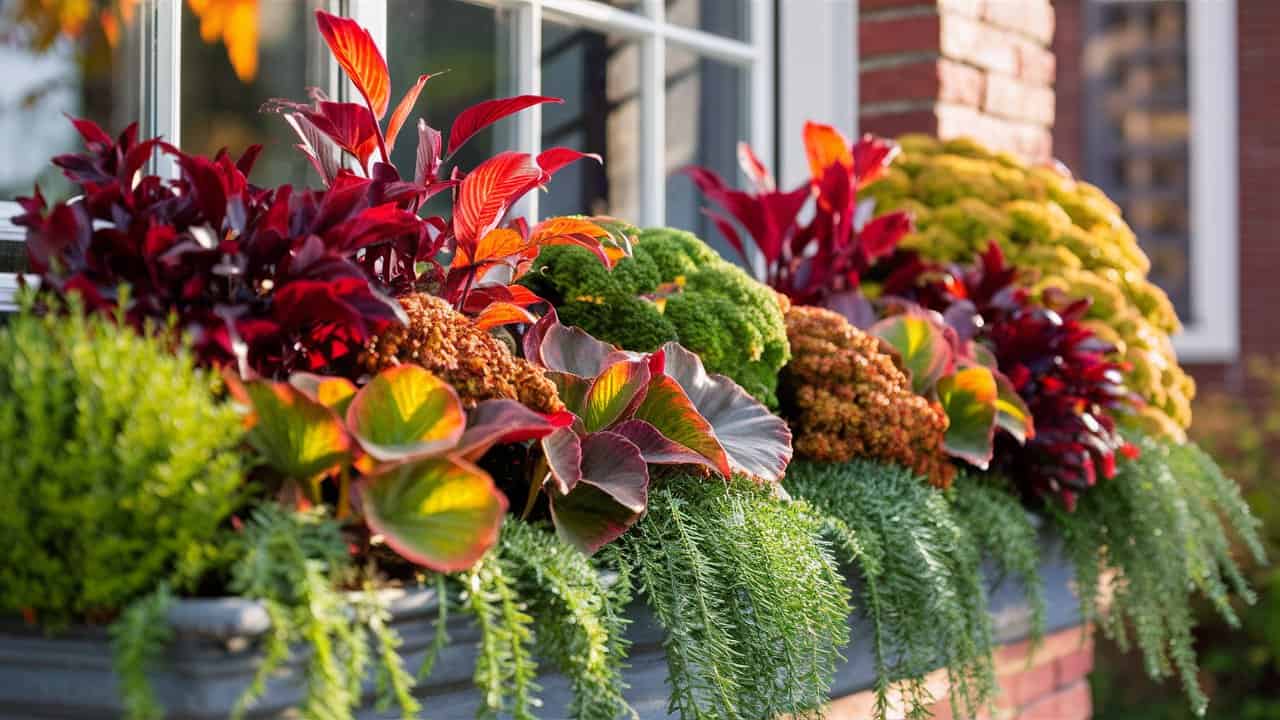As the days grow shorter and the air turns crisp, many gardeners look to refresh their window boxes with vibrant autumnal plantings. With the right selection of plants, your window boxes can become a stunning focal point, adding pops of color and texture that can cheer up even the gloomiest fall days.
Chrysanthemums
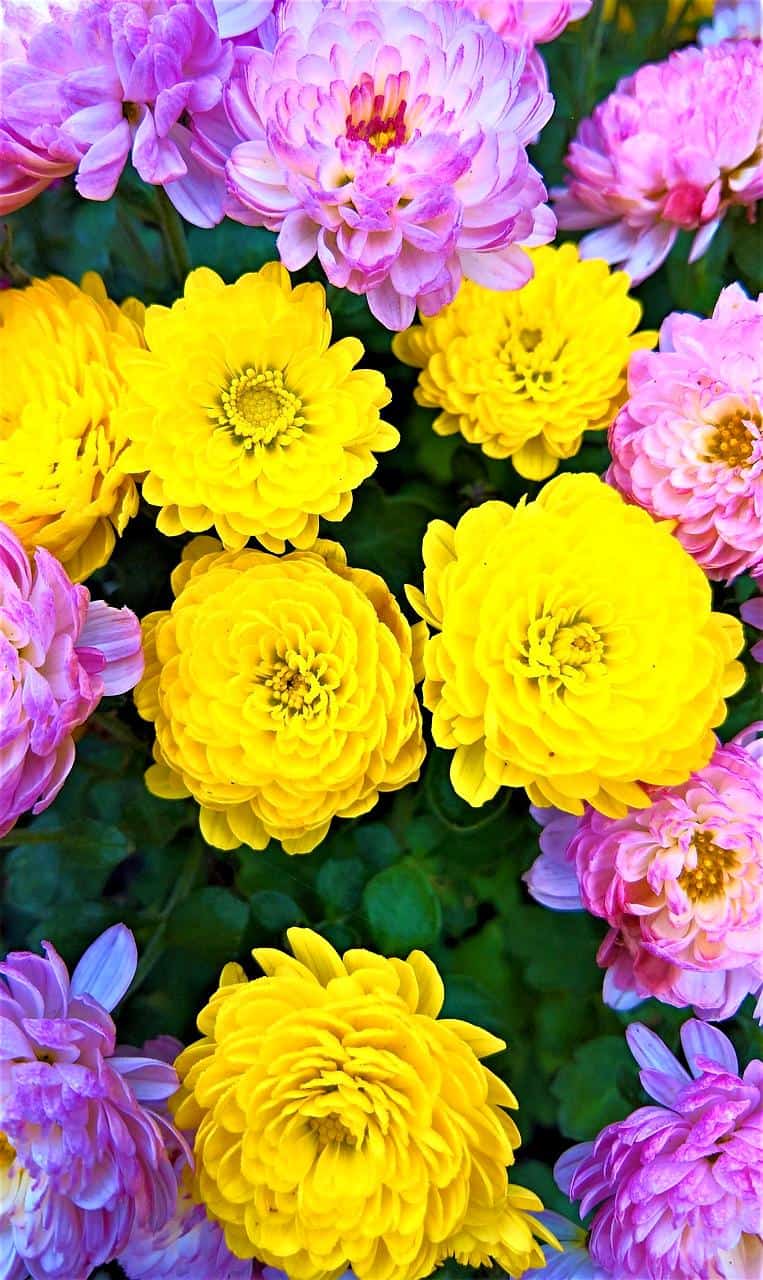
Chrysanthemums, or “mums” as they are commonly known, are arguably the quintessential fall flowers. They come in a dazzling array of colors, from warm oranges and yellows to deep purples and reds, making them an ideal choice for infusing your window boxes with vibrant seasonal hues. These hardy perennials are both resilient and beautiful, thriving in the cooler temperatures of autumn.
When choosing chrysanthemums for your window box, consider selecting a mix of varieties with varying bloom times and flower shapes. This not only extends the visual appeal but also creates a dynamic arrangement. For instance, you might combine the classic cushion mums, which are dense and rounded, with spider mums that feature long, spidery petals for a striking contrast.
To keep your chrysanthemum display bursting with life throughout the fall, ensure they receive some sunlight and regularly deadhead spent blooms. Even as temperatures dip, well-cared-for mums can continue to bloom into late fall, providing a vibrant centerpiece for your window box that will last through chilly nights.
Coral Bells (Heuchera)

Another exceptional choice for window boxes in the fall is Coral Bells (Heuchera). Renowned for their stunning foliage, these perennial plants offer a unique texture and color that can enhance any autumn display. The leaves of Coral Bells range from deep purple to bright lime green, often with intricate veining or ruffled edges that add depth and interest.
Coral Bells are also extremely versatile. They thrive in a variety of conditions, from full sun to light shade, making them adaptable to different window orientations. When incorporating them into your window boxes, consider combining the foliage of Coral Bells with other flowering plants for an appealing contrast. The colorful leaves provide a constantly evolving palette that complements the more transient blooms of seasonal flowers.
Additionally, Coral Bells are known for their low maintenance requirements. Once established, they require minimal watering and are relatively pest-resistant. This durability makes them an excellent choice for busy gardeners who still want to enjoy a visually impressive display without the fuss.
Chinese Lanterns (Physalis alkekengi)
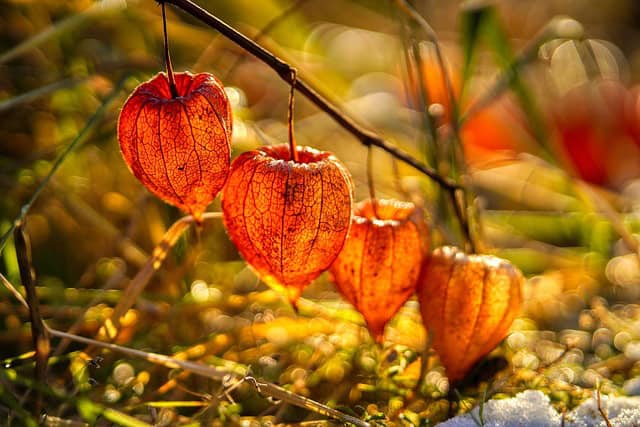
For a unique touch to your fall window boxes, consider incorporating Chinese Lanterns (Physalis alkekengi). This fascinating plant not only adds visual intrigue with its distinctive, lantern-shaped husks but also showcases the enchanting transformation that comes with the fall season. The bright orange to deep red husks are both ornamental and eye-catching, creating a vibrant contrast against the backdrop of your window box.
Beyond their aesthetic appeal, Chinese Lanterns are also a conversation starter. The fruiting bodies resemble small paper lanterns, adding an element of whimsy and charm to your autumn arrangements. These perennial plants can provide texture and height when combined with lower-growing species, making them valuable for layered designs.
Chinese Lanterns prefer well-drained soil and full sun, though they can tolerate partial shade. When positioning them in your window boxes, be mindful that they can spread quite a bit; they may need some containment to ensure they don’t overwhelm other plants. Plus, once the leaves start to die back in late autumn, you can leave the husks in place for a dramatic winter display, making this plant an enduring addition to your seasonal decorations.
Santolina (Santolina chamaecyparissus)
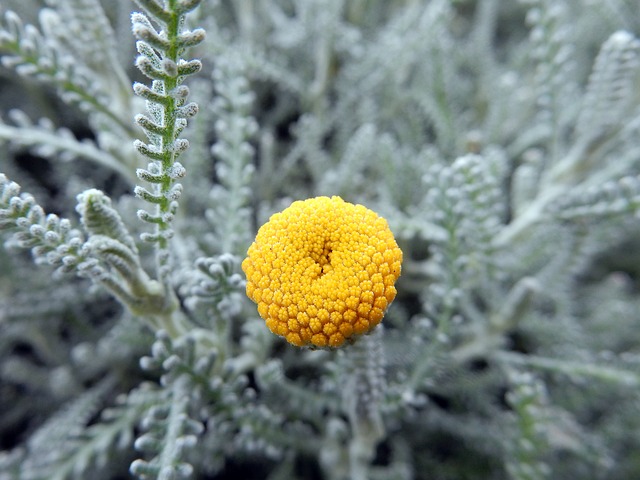
Santolina, commonly known as cotton lavender, offers a remarkable textural contrast to traditional fall plants. Native to the Mediterranean region, this evergreen perennial features fine, aromatic, silver-gray foliage that provides a stunning backdrop for the fiery colors of autumn. The diminutive yellow button-like flowers bloom in late spring and early summer, but it’s the foliage that shines throughout the fall, making it a perfect companion plant for seasonal displays.
Santolina thrives best in well-drained soil and full sunlight, making it an ideal addition to window boxes situated in bright, sunny spots. Its drought-resistant nature means it performs well with minimal watering, though it should be monitored during extremely dry spells. When integrating Santolina into your fall arrangements, consider pairing it with bright flowering plants such as chrysanthemums or pansies; the soft, muted tones of its foliage can provide a calming effect that beautifully contrasts with the more vibrant foliage and blooms.
Pruning is a simple way to maintain your Santolina’s shape and health as fall progresses. A light trimming in fall encourages new growth and helps maintain a tidy appearance throughout the winter months. With its unique texture and resilient nature, Santolina adds a distinctive touch to your fall window boxes while remaining low-maintenance.
Celosia (Celosia argentea)
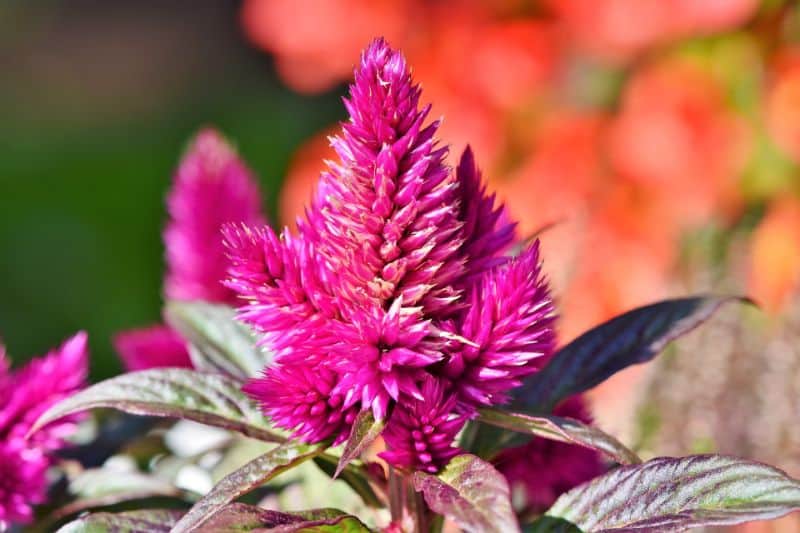
Celosia, or cockscomb, is another exceptional choice for fall window boxes with its bold and whimsical blooms. Known for their unique flower shapes, Celosia varieties range from plume-like to brain-like configurations, presenting an extraordinary visual interest. These plants come in an array of striking colors, including vivid reds, oranges, yellows, and even purples, making them eye-catching additions to your autumn displays.
Incorporating Celosia into your window box can introduce an exciting contrast to the more traditional fall flowers. They thrive in full sun and well-drained soil, and their heat and drought resistance makes them an excellent option for late summer through fall planting. For a stunning effect, group Celosia together or pair them with softer, more muted plants like Coral Bells, which will help to balance their exuberance.
As the days grow shorter and temperatures start to decline, Celosia can still thrive, though they may start to fade in color with the cold. If you want to prolong their vivid display, ensure they receive sufficient sunlight and water in the early evenings. Unlike many other fall plants, Celosia sends out its distinctive blooms late into the season, often lasting until frost, allowing your window boxes to maintain a lively appearance even as other flowers begin to wilt.
Heather (Calluna vulgaris)
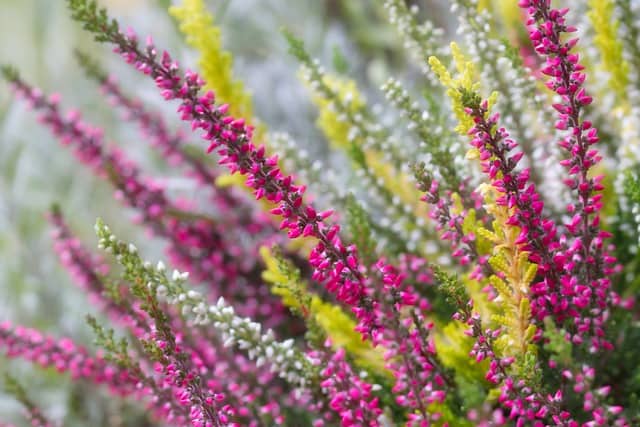
Heather, particularly Calluna vulgaris, is a wonderful choice for bringing a touch of elegance and continuity to fall window boxes. This hardy perennial offers not just seasonal appeal but also an evergreen quality that ensures beauty throughout the entire year. With its small, bell-shaped flowers appearing in shades of pink, purple, and white, Heather can grace your window boxes with a lovely cascade of color and texture as summer wanes into fall.
One of the most appealing aspects of Heather is its adaptability to various soil types, though a preference for well-drained, acidic conditions means it will flourish in containers with the right soil mix. In a window box, Heather can create a stunning focal point, particularly when paired with other plants that have contrasting shapes and colors; for example, the silvery leaves of Santolina or the fiery hues of Celosia can provide excellent contrasts that highlight Heather’s grace.
Heather’s compact growth habit makes it suitable for window boxes where space is limited, and its ability to attract pollinators adds an ecological benefit to your fall display. Although Heather is quite hardy, providing some protection from harsher winter conditions can be beneficial. A light mulch can help regulate moisture and temperature, ensuring that these lovely plants thrive into next spring.
Ornamental Peppers (Capsicum ‘Sombrero’)

Ornamental peppers, particularly the vibrant ‘Sombrero’ variety, are a captivating choice for fall window boxes. These peppers not only offer a delightful burst of color, but their eye-catching fruit can vary in shades from yellow to purple, red, and orange. This incredible color diversity can create a dynamic display that captures the essence of autumn, ideal for mixing with other fall plants.
Ornamental peppers thrive in full sun and well-drained soil, making them perfect for sunny window boxes. They grow compactly, typically reaching heights of 12 to 24 inches, allowing for a layered design in conjunction with taller plants or trailing vines. Adding ornamental peppers to your fall arrangements not only contributes vibrant color but also provides the added joy of watching the pepper fruits gradually change color as the season progresses.
While ornamental peppers are primarily grown for aesthetic purposes, it’s essential to understand that these fruits are edible but can be quite hot, making them suitable for culinary experiments with caution. Their ability to withstand cooler temperatures while still providing a pop of color makes them a splendid choice for enlivening your window box during the fall months.
Chameleon Plant (Houttuynia cordata)
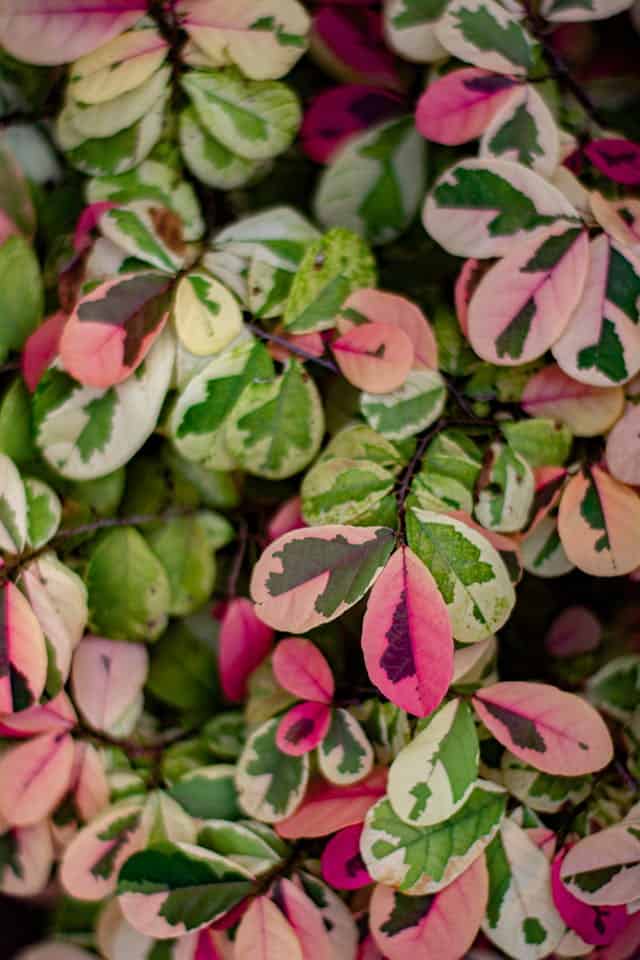
Chameleon Plant, or Houttuynia cordata, is a unique trailing perennial that lends itself beautifully to window box arrangements. Known for its stunning variegated foliage, which features green leaves splashed with red, yellow, and cream, the Chameleon Plant adds an intriguing layer of color that complements traditional fall plantings. As it matures, it produces small, aromatic flowers that can enhance the visual appeal of your arrangement as well.
This plant thrives in partial shade to full sun, making it versatile for various window orientations. The Chameleon Plant is also relatively low-maintenance, requiring moderate watering and well-drained soil. Its ability to trail gracefully over the edges of the window box offers an excellent opportunity for cascading arrangements that create a lush look.
One appealing characteristic of the Chameleon Plant is its adaptability; it can tolerate a range of growing conditions, making it a reliable choice as the weather becomes cooler. The fragrant foliage, which has a hint of citrus, not only attracts beneficial pollinators but also adds an olfactory component to your fall display. By integrating the Chameleon Plant into your window box, you can create a colorful, textural, and aromatic sensory experience that captivates your senses.
Coleus
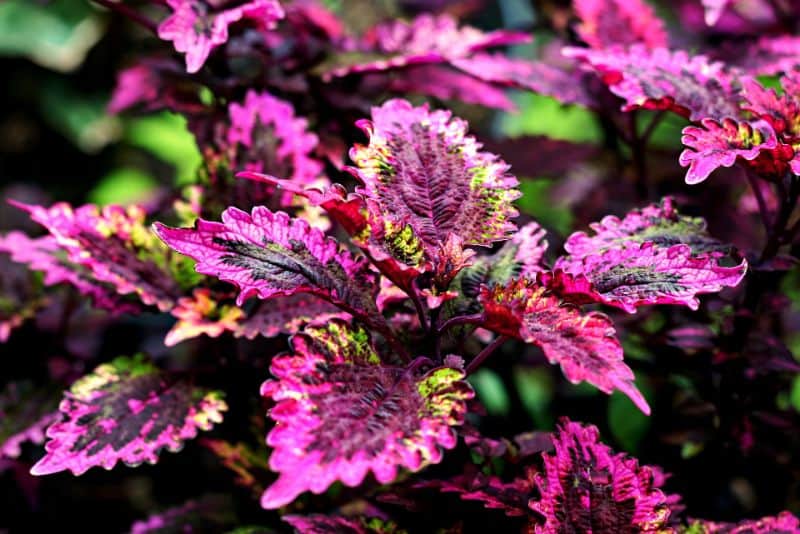
Coleus is an extraordinary option for adding unmatched foliage interest to your fall window boxes. With its variety of leaf shapes, sizes, and vivid colors, Coleus can provide a bold and refreshing break from traditional autumn blooms. While often associated with warm-weather plantings, many Coleus varieties are surprisingly resilient, making them suitable for fall displays.
Selecting Coleus that showcases warm hues such as deep burgundy, fiery red, and bright orange can effectively reflect the changing seasons. Their fast growth allows for dynamic arrangements that can fill in spaces and create lush, thick displays, which can be beautifully highlighted by your choice of accompanying flowering plants or ornamental grasses.
Coleus prefers partially shaded areas, making it an excellent addition to window boxes that may receive midday shade. They thrive well in well-drained, nutrient-rich soil, and regular pinching encourages bushier growth, enhancing their visual impact. As temperatures begin to cool, you may notice the vibrant colors of Coleus become even more pronounced, adding a fresh vibrancy to your fall window box arrangements.
Dusty Miller (Senecio cineraria)

Dusty Miller, celebrated for its striking silvery foliage, is an outstanding choice for fall window boxes. This evergreen perennial, while hardy enough to withstand cooler temperatures, adds a soft, luminous quality to arrangements that can counterbalance the more vibrant, warm colors of autumn blooms. The intricate, lobed leaves create a stunning backdrop that can highlight and elevate nearby colorful plants.
One of the remarkable characteristics of Dusty Miller is its adaptability; it thrives in various conditions, from full sun to light shade, and prefers well-drained soil. This resilience enables it to withstand the unpredictable weather conditions that often accompany fall, maintaining its appealing form and color throughout the season.
Dusty Miller’s silvery tones are particularly effective in creating contrast with brighter plants, such as ornamental peppers or vibrant Chrysanthemums. When designing your window box, consider using Dusty Miller as a border plant that frames other seasonal delights. Not only does it enhance the overall aesthetic, but it also provides an excellent structural element to your arrangements. For those seeking a low-maintenance option that offers substantial visual impact, Dusty Miller is an undeniably charming choice.
Globe Amaranth (Gomphrena globosa)
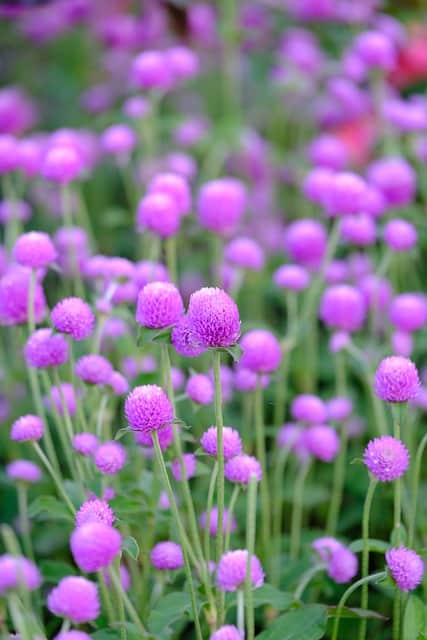
Globe Amaranth is an engaging addition to any fall window box, renowned for its cheerful, globe-shaped flower heads. Available in an array of vivid colors such as pink, purple, magenta, and white, these flowers add a playful nod to the colorful foliage of autumn. Unlike many flowering plants that fade as temperatures cool down, Globe Amaranth thrives in the cooler weather, often producing vibrant blooms well into late fall.
This resilient plant flourishes in full sun and adapts well to various soil types, provided there is good drainage. As an annual, Globe Amaranth encourages gardeners to embrace creativity in their seasonal combinations, making it an exciting choice for fall window boxes. The plant can reach a height of about 1 to 2 feet, providing ample height to lower-growing plants, thereby adding layers to your window box design.
Beyond its visual appeal, Globe Amaranth also has the added benefit of attracting pollinators, such as butterflies and bees, which can contribute to a lively outdoor space. When planting, consider combining Globe Amaranth with trailing plants or textured foliage, such as the aforementioned Dusty Miller, for a complete and engaging display. Their long-lasting blooms ensure that your window boxes remain brilliant and inviting for passersby throughout the fall.
Impatiens
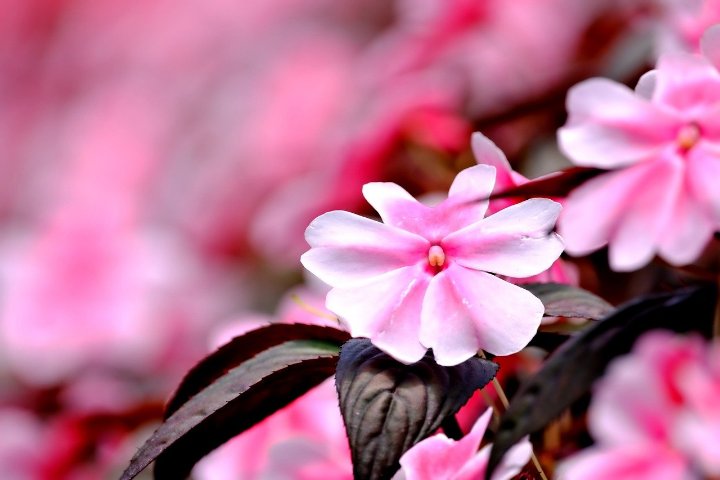
While traditionally thought of as a summer plant, Impatiens can be a delightful addition to your fall window boxes, particularly if you opt for the shade-tolerant varieties. Known for their lush, rounded flowers, Impatiens add a splash of color that can brighten any autumn landscape. Available in a myriad of hues, including vibrant reds, pinks, purples, and whites, these flowers can be mixed and matched to create striking displays against the backdrop of fading summer leaves.
Impatiens thrive in shady to partially shaded conditions, making them ideal for window boxes that don’t receive direct sunlight all day long. They prefer moist, well-drained soil and benefit from regular watering and fertilization, especially during the active growing season. For a robust window box, pair Impatiens with the silvery foliage of Dusty Miller or the bold shapes of Globe Amaranth, creating an interesting interplay of textures and colors that captures the essence of autumn.
Though they may fade as temperatures drop dramatically, Impatiens can still provide a brilliant burst of late-season beauty. Additionally, they can serve as a transitional plant in your window box, helping you blend summer into fall arrangements seamlessly. By incorporating Impatiens into your fall display, you maintain a sense of vibrancy and warmth, ensuring that your window boxes remain inviting and visually appealing.
Marigold (Tagetes)
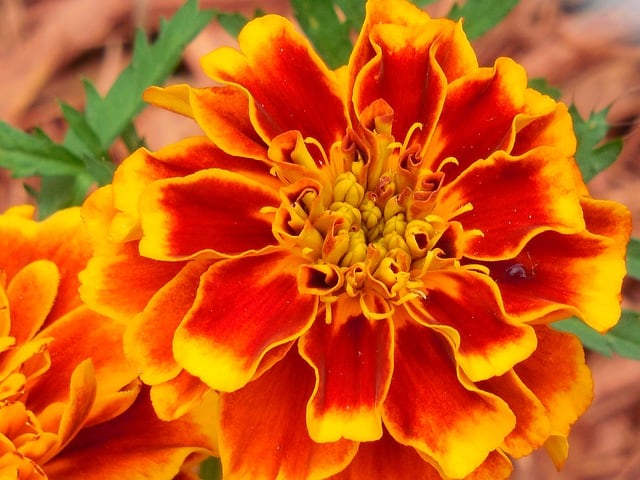
Marigolds are a classic favorite among gardeners, renowned for their bright, cheerful blooms and pest-repelling properties. Available in shades of orange, yellow, and even a deep red, Marigolds can infuse your fall window boxes with a warm, sunny disposition, perfectly echoing the glorious colors of autumn. While often associated with summer gardens, these hardy annuals can continue to bloom well into the fall if given proper care.
One of the most appealing aspects of Marigolds is their adaptability. They thrive in full sun and can tolerate a range of soil types, although they prefer moderately fertile, well-drained soil. This resilience allows them to suit various window box environments, ensuring that their vibrant blooms remain a striking feature against the backdrop of the changing seasons.
Additionally, Marigolds are known for attracting beneficial insects while deterring pests like aphids and nematodes, making them an eco-friendly choice for your garden. For best results, incorporate a mix of different Marigold varieties for a delightful mosaic of colors and textures. Pairing Marigolds with other fall-loving plants will create a beautifully layered and visually engaging display that captures the essence of the season and draws admiration from everyone who passes by.
Million Bells (Calibrachoa)
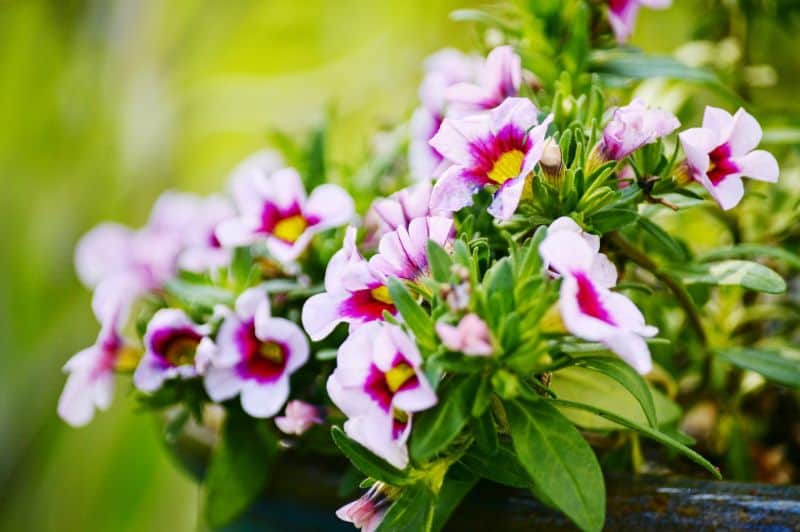
Million Bells are a stunning addition to fall window boxes, known for their abundant, bell-shaped flowers that resemble tiny Petunias. The vibrant colors range from bright yellows and oranges to deep purples and reds, providing a lively contrast against the more muted tones typical of fall foliage. These charming flowers create a cascading effect, perfect for window boxes where they can spill over the edges and create a verdant, colorful curtain.
These versatile plants thrive in full sun but can also tolerate light shade, providing flexibility in placement. Million Bells are particularly valued for their superior blooming ability, producing an impressive array of flowers from spring through fall. They are also relatively drought-tolerant once established, making them low-maintenance options for window boxes.
To maximize their impact, plant Million Bells alongside upright flowers like Marigolds or ornamental grasses to create an eye-catching multi-dimensional display. Their ability to withstand cooler temperatures makes them excellent companions for fall arrangements, ensuring that your window boxes radiate color long after summer blooms have faded. By incorporating Million Bells, you can design a stunning fall garden display while enjoying the vibrant blossoms throughout the season.
Pansies (Viola tricolor var. hortensis)
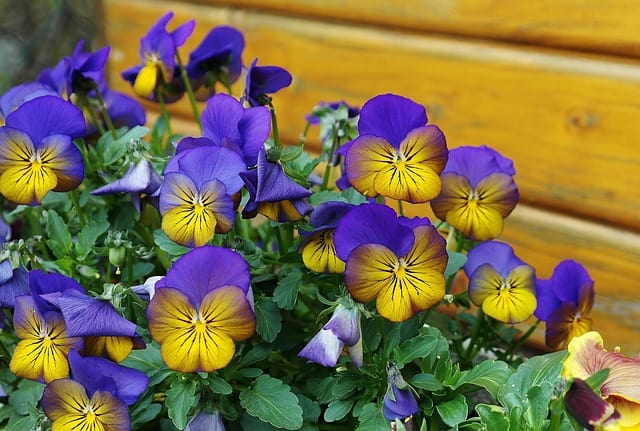
Pansies are synonymous with fall gardens, offering a breathtaking array of colors and patterns that can brighten even the gloomiest autumn days. Their distinctive, velvety petals come in a multitude of shades—from deep blues and purples to sunny yellows and whites—providing immense opportunities to express creativity in window box designs. This versatility allows for just about any color palette to enhance the overall aesthetics of your outdoor space.
In terms of care, Pansies thrive in cool weather, making them an ideal choice for the fall months. They prefer full sun to partial shade and do best in well-drained, nutrient-rich soil. Regular deadheading will encourage continuous blooming throughout the season, ensuring that your window boxes remain lush and appealing.
When planning your fall arrangements, consider pairing Pansies with low-growing foliage plants, such as Dusty Miller, or other vibrant flowers like Marigolds or Globe Amaranth. This combination not only results in a rich tapestry of colors but also offers interesting contrasts in both texture and structure. Furthermore, by planting Pansies, you add a delightful charm to your window boxes, capturing the spirit of fall in a way that invites warmth and joy into your home.
Petunia
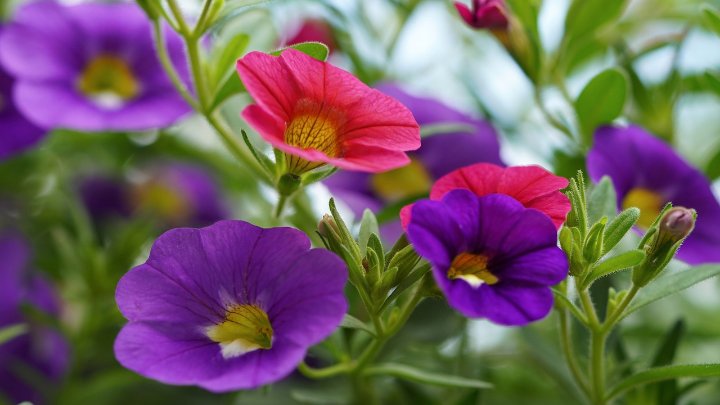
Petunias are a staple in many gardens due to their vibrant color palette and prolific blooming. Available in a variety of shades—from bright pinks and rich purples to soft whites—Petunias can add a lively exuberance to your fall window boxes. While they are often associated with the warmer months, certain varieties are surprisingly hardy and can withstand cooler fall temperatures, especially if planted early enough in the season.
These versatile plants thrive in full sun and adapt well to different soil types, though they prefer fertile, well-draining soil. Regular watering and deadheading will encourage continuous blooming, giving you a sustained burst of color as the autumn days progress. Petunias also attract pollinators like butterflies and bees, enhancing the ecological benefits of your window box.
For a visually striking arrangement, consider layering Petunias with taller plants like ornamental grasses or vibrant Marigolds. Their cascading growth habit can soften the edges of your window boxes, creating a lush, inviting display. As the weather cools down, the rich, diverse hues of the Petunia flowers can create a beautiful tapestry that complements the changing colors of surrounding fall foliage.
Oxalis or Shamrock (Oxalis regnellii)
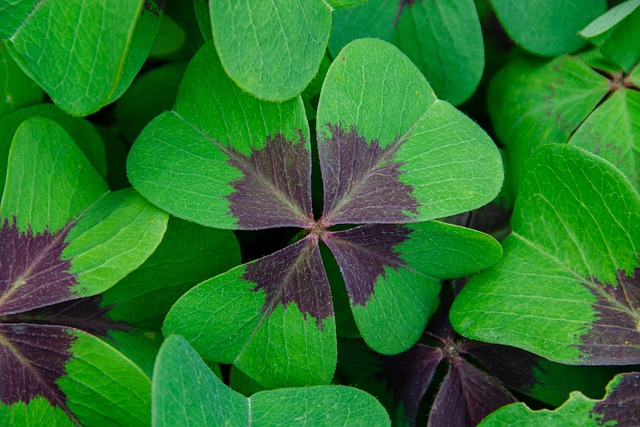
Oxalis, commonly known as Shamrock, brings a unique charm to fall window boxes with its distinct lush foliage and delightful flowers. This perennial plant showcases attractive trifoliate leaves that can range in color from deep green to striking purple, adding an interesting textural element that contrasts beautifully with other seasonal plantings. In late summer to fall, Oxalis produces small, cup-shaped flowers in shades of white, pink, or yellow, providing delicate color that is perfect for the autumn season.
Oxalis thrives in partial shade to full sun, making it adaptable to varying light conditions, which is excellent for window boxes that might receive different amounts of sunlight throughout the day. The plant prefers well-drained, nutrient-rich soil and moderate watering, as it can be prone to rot if overwatered.
This plant pairs beautifully with other fall favorites such as Pansies and Dusty Miller, creating an eye-catching arrangement that is both visually pleasing and diverse in foliage and flower shapes. The interesting leaf shapes of Oxalis can add depth and a ‘wow’ factor to your window boxes, elevating your autumn garden display. Its low-maintenance nature and durability make it an ideal choice for gardeners looking to create captivating arrangements that endure through changing weather.
Salvia (Salvia yangii)

Salvia is revered for its vibrant blooms and fragrant foliage, making it a wonderful addition to fall window boxes. Salvia yangii features stunning clusters of tubular flowers in hues of blue, purple, and lavender, which can create a striking focal point within your autumn arrangements. These flowers not only provide a splash of color but also attract pollinators, adding to the lively atmosphere of your outdoor space.
This drought-tolerant perennial prefers full sun and thrives in well-drained soil, making it an excellent choice for window boxes that receive plenty of sunlight. Salvia is known for its resilience in cool temperatures, allowing it to continue blooming well into the fall season. With its upright growth habit, it pairs well with trailing plants, such as Million Bells or Petunias, creating a beautiful contrast between height and cascading growth.
Consider planting Salvia alongside other fall plants that share similar care requirements, forming cohesive yet visually interesting combinations. The soft, aromatic foliage enhances the overall sensory experience of your window box, inviting both sight and scent. Including Salvia in your fall display ensures that your window boxes remain vibrant and inviting, creating a warm ambiance for the changing seasons.
Sedum (Sedum, Hylotelephium spp.)
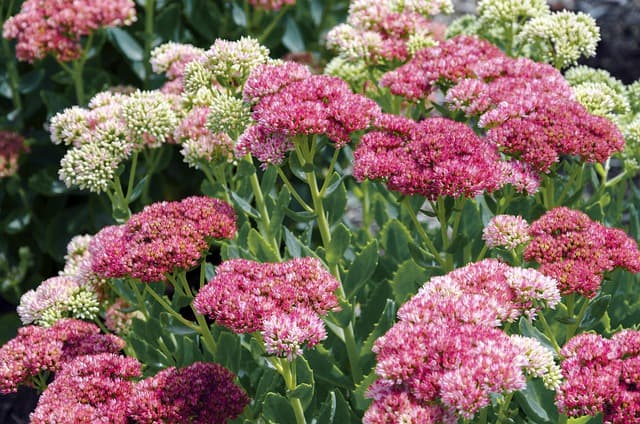
Sedum, commonly known as stonecrop, is an ideal choice for fall window boxes, offering both aesthetic appeal and resilience. This succulent perennial features fleshy leaves and comes in a variety of shapes, sizes, and colors—from vivid greens to deep burgundies and even vibrant yellows. Its compact growth habit and ability to thrive in poor soil make Sedum a low-maintenance addition that can endure through the autumn months.
What sets Sedum apart is its late summer to fall blooming period. The flower clusters, often in shades of pink, yellow, or white, are not only visually captivating but also serve as a crucial nectar source for pollinators that are still active as temperatures begin to drop. By incorporating Sedum into your window boxes, you create a natural habitat for beneficial insects while enhancing the fall biodiversity of the garden.
When designing a display, think about pairing Sedum with other fall favorites like Marigolds or Sweet Alyssum for contrasting textures and colors. Sedum’s architectural form can provide balance when planted alongside taller or bushier varieties, creating a harmonious arrangement that maintains interest throughout the season. Its ability to tolerate cooler temperatures makes it a reliable staple in any fall arrangement.
Sweet Alyssum (Lobularia maritima)
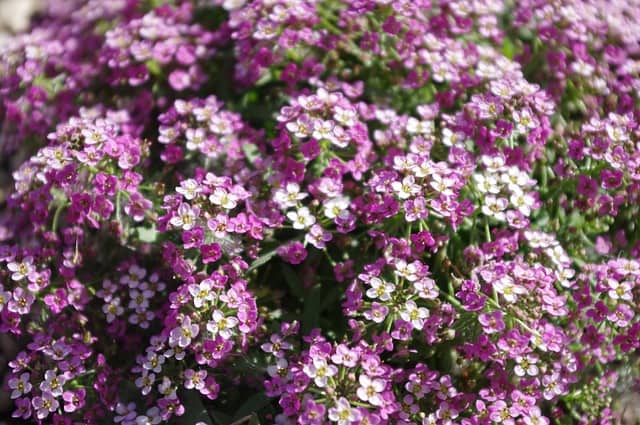
Sweet Alyssum is a delightful and fragrant plant that brings a touch of charm to fall window boxes. With its tiny, clustered flowers that bloom in a spectrum of colors—including white, lavender, yellow, and pink—this low-growing plant adds softness and elegance to autumn displays. Its sweet scent attracts pollinators, creating a lively atmosphere in your outdoor space while delighting your senses.
This versatile annual thrives in full sun to partial shade and prefers well-drained soil. Sweet Alyssum is known for its ability to tolerate cooler temperatures, allowing it to flourish throughout the fall months. Regular deadheading encourages continuous blooming, ensuring that your window boxes remain vibrant and captivating well into the season.
When creating your fall arrangements, Sweet Alyssum works beautifully as a filler or trailing plant, cascading over the edges of the window box. You might combine it with upright plants like Sedum or Pansies, showcasing a lovely contrast between the flowing forms of Sweet Alyssum and the sturdier textures of other blooms. With its charming appearance and delightful fragrance, Sweet Alyssum ensures that your window boxes remain welcoming and fragrant throughout the fall.
Verbena (Verbena spp.)

Verbena is an excellent choice for adding a splash of color to your fall window boxes. Known for its resilient nature and vibrant blooms, Verbena offers a range of colors—ranging from vivid red and pink to purple and blue—that can enliven any arrangement. Its sprawling growth habit creates a beautiful layering effect when combined with other plants, making it an ideal choice for cascading arrangements.
These hardy plants thrive in full sun and can tolerate a variety of soil conditions, although they perform best in well-drained soils. Verbena is particularly valued for its long blooming season; with proper care, it can produce flowers from spring through fall, providing a vibrant display late into the season. This plant is also known for its drought resistance, making it a low-maintenance option for gardeners.
As you design your fall window boxes, consider pairing Verbena with contrasting plants such as Sedum or Million Bells to create a captivating garden. Their trailing nature can soften the edges of your window boxes, while the upright forms of Sedum or salvia provide an intriguing counterbalance. Additionally, the delicate fragrance of Verbena adds an aromatic aspect to your arrangements, inviting guests to stop and enjoy the visual and sensory experience of your fall garden.


